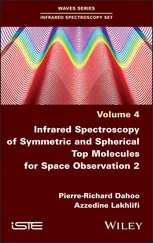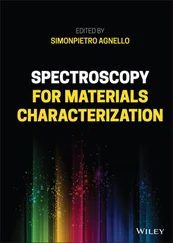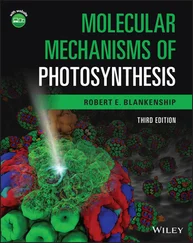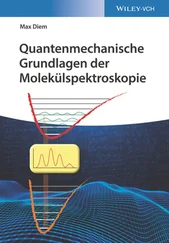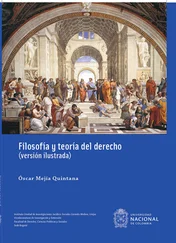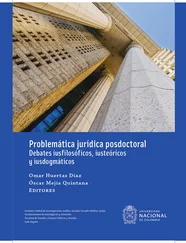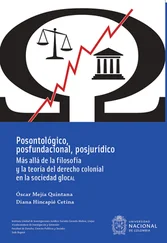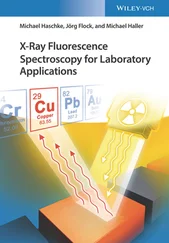In other forms of optical spectroscopy (for example, for all manifestations of optical activity, see Chapter 10), the magnetic transition moment must be considered as well. This interaction leads to a coupled translation and rotation of charge, which imparts a helical motion of charge. This helical motion is the hallmark of optical activity, since, by definition, a helix can be left‐ or right‐handed.
From the viewpoint of a spectroscopist, electromagnetic radiation is produced by atoms or molecules undergoing transitions between well‐defined stationary states. This view obviously does not include the creation of radio waves or other long‐wave phenomena, for example, in standard antennas in radio technology, but describes ultraviolet, visible, and infrared radiation, which are the main subjects of this book. The atomic line spectra that are employed in analytical chemistry, for example, in a hollow cathode lamp used in atomic absorption spectroscopy, are due to transitions between electronic energy states of gaseous metal atoms.
The light created by the hot filament in a standard light bulb is another example of light emitted by (metal) atoms. However, here, one needs to deal with a broad distribution of highly excited atoms, and the description of this so‐called blackbody radiation was one of the first steps in understanding the quantization of light.
Any material at a temperature T will radiate electromagnetic radiation according to the blackbody equations. The term “blackbody” refers to an idealized emitter of electromagnetic radiation with intensity I( λ , T ) or radiation density ρ( T , ν ) as a function of wavelength and temperature. At the beginning of the twentieth century, it was not possible to describe the experimentally obtained blackbody emission profile by classical physical models. This profile was shown in Figure 1.2for several temperatures between 1000 and 5000 K as a function of wavelength.
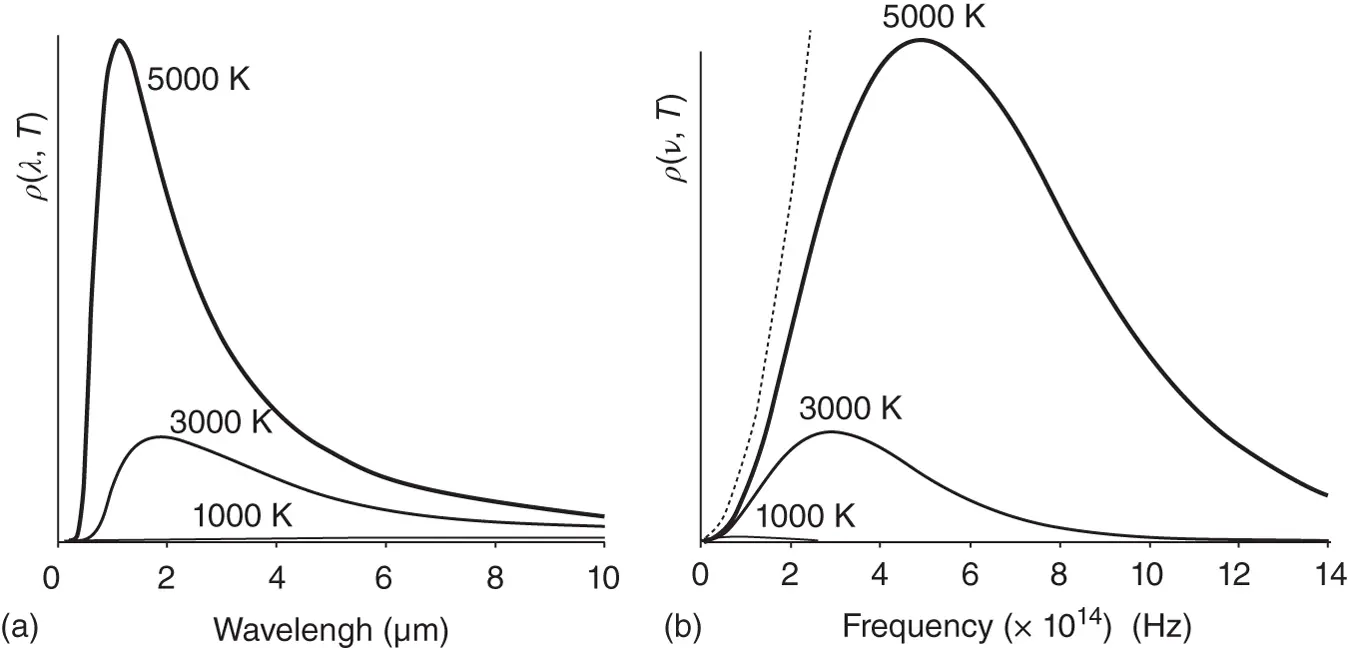
Figure 1.2 (a) Plot of the intensity I radiated by a blackbody source as a function of wavelength and temperature. (b) Plot of the radiation density of a blackbody source as a function of frequency and temperature. The dashed line represents this radiation density according to Eq. (1.5).
M. Planck attempted to reproduce the observed emission profile using classical theory, based on atomic dipole oscillators (nuclei and electrons) in motion. These efforts revealed that the radiation density ρ emitted by a classical blackbody into a frequency band d ν as function of ν and T would be given by Eq. (1.5):
(1.5) 
where the Boltzmann constant k = 1.381 × 10 −23[J/K]. This result indicated that the total energy radiated by a blackbody according to this “classical” model would increase with ν 2as shown by the dashed curve in Figure 1.2b. If this equation were correct, any temperature of a material above absolute zero would be impossible, since any material above 0 K would emit radiation according to Eq. (1.5), and the total energy emitted would be unrestricted and approach infinity. Particularly, toward higher frequency, more and more radiation would be emitted, and the blackbody would cool instantaneously to 0 K. Thus, any temperature above 0 K would be impossible. (For a more detailed discussion on this “ultraviolet catastrophe,” see Engel and Reid [2].)
This is, of course, in contradiction with experimental results and was addressed by M. Planck (1901) who solved this conundrum by introducing the term 1/(e hν/kT− 1) into the blackbody equation, where h is Planck's constant:
(1.6) 
The shape of the modified blackbody emission profile given by Eq. (1.6)is in agreement with experimental results. The new term introduced by Planck is basically an exponential decay function, which forces the overall response profile to approach zero at high frequency. The numerator of the exponential expression contains the quantity h ν, where h is Planck's constant ( h = 6.626 × 10 −34Js). This numerator implies that light exists as “quanta” of light, or light particles (photons) with energy E :
(1.7) 
This, in itself, was a revolutionary thought since the wave properties of light had been established more than two centuries earlier and had been described in the late 1800s by Maxwell's equations in terms of electric and magnetic field contributions. Here arose for the first time the realization that two different descriptions of light, in terms of waves and particles, were appropriate depending on what questions were asked. A similar “particle–wave duality” was later postulated and confirmed for matter as well (see below). Thus, the work by Planck very early in the twentieth century is truly the birth of the ideas resulting in the formulation of quantum mechanics.
Incidentally, the form of the expression  or
or  is fairly common‐place in classical physical chemistry. It compares the energy of an event, for example, a molecule leaving the liquid for the gaseous phase, with the energy content of the surroundings. For example, the vapor pressure of a pure liquid depends on a term
is fairly common‐place in classical physical chemistry. It compares the energy of an event, for example, a molecule leaving the liquid for the gaseous phase, with the energy content of the surroundings. For example, the vapor pressure of a pure liquid depends on a term  , where ΔH vapis the enthalpy of vaporization of the liquid, and RT = NkT is the energy at temperature T , R is the gas constant, and N is Avogadro's number. Similarly, the dependence of the reaction rate constant and the equilibrium constant on temperature is given by equivalent expressions that contain the activation energy or the reaction enthalpy, respectively, in the numerator of the exponent. In Eq. (1.6), the photon energy is divided by the energy content of the material emitting the photon and provides a likelihood of this event occurring.
, where ΔH vapis the enthalpy of vaporization of the liquid, and RT = NkT is the energy at temperature T , R is the gas constant, and N is Avogadro's number. Similarly, the dependence of the reaction rate constant and the equilibrium constant on temperature is given by equivalent expressions that contain the activation energy or the reaction enthalpy, respectively, in the numerator of the exponent. In Eq. (1.6), the photon energy is divided by the energy content of the material emitting the photon and provides a likelihood of this event occurring.
Figure 1.2shows that the overall emitted energy increases with increasing temperature and that the peak wavelength of maximum intensity shifts toward lower wavelength (Wien's law). The total energy W radiated by a blackbody per unit area and unit time into a solid angle (the irradiance), integrated over all wavelengths, is proportional to the absolute temperature to the fourth power:
(1.8) 
(Stefan–Boltzmann law)
The irradiance is expressed in units of  or
or  .
.
Читать дальше
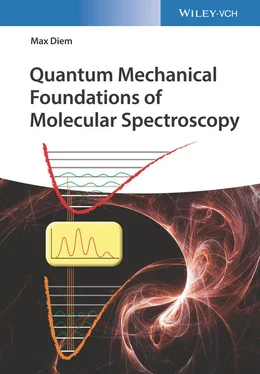




 or
or  is fairly common‐place in classical physical chemistry. It compares the energy of an event, for example, a molecule leaving the liquid for the gaseous phase, with the energy content of the surroundings. For example, the vapor pressure of a pure liquid depends on a term
is fairly common‐place in classical physical chemistry. It compares the energy of an event, for example, a molecule leaving the liquid for the gaseous phase, with the energy content of the surroundings. For example, the vapor pressure of a pure liquid depends on a term  , where ΔH vapis the enthalpy of vaporization of the liquid, and RT = NkT is the energy at temperature T , R is the gas constant, and N is Avogadro's number. Similarly, the dependence of the reaction rate constant and the equilibrium constant on temperature is given by equivalent expressions that contain the activation energy or the reaction enthalpy, respectively, in the numerator of the exponent. In Eq. (1.6), the photon energy is divided by the energy content of the material emitting the photon and provides a likelihood of this event occurring.
, where ΔH vapis the enthalpy of vaporization of the liquid, and RT = NkT is the energy at temperature T , R is the gas constant, and N is Avogadro's number. Similarly, the dependence of the reaction rate constant and the equilibrium constant on temperature is given by equivalent expressions that contain the activation energy or the reaction enthalpy, respectively, in the numerator of the exponent. In Eq. (1.6), the photon energy is divided by the energy content of the material emitting the photon and provides a likelihood of this event occurring.
 or
or  .
.